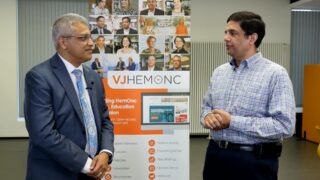With the bispecific antibodies and the CAR-T therapies, there is increasing interest in trying to develop outpatient strategies because having to depend on large tertiary referral institutions to deliver these immunotherapies also means that the majority of the patients are not going to be able to access these, particularly with bispecific antibodies where we don’t really need all the apheresis facilities and the cell therapy facilities...
With the bispecific antibodies and the CAR-T therapies, there is increasing interest in trying to develop outpatient strategies because having to depend on large tertiary referral institutions to deliver these immunotherapies also means that the majority of the patients are not going to be able to access these, particularly with bispecific antibodies where we don’t really need all the apheresis facilities and the cell therapy facilities. There is a real possibility we can actually give it to the patients in the community, as long as we can develop outpatient strategies and develop strategies that will reduce the risk of the early side effects like cytokine release syndrome and ICANS. So at Mayo Clinic, we have been doing outpatient bispecific antibodies and CAR-Ts right from the beginning, primarily because of the learnings from the outpatient transplant practice that we have had for almost two plus decades right now. So with talquetamab, you know, we looked at a cohort of about 32 patients. 25 of them were started as outpatient for step-up dosing and the seven patients were primarily earmarked for inpatient step-up dosing. And what we were able to find was that the majority of the patients, a good number of these patients were able to complete their step-up dosing entirely in the outpatient setting. Some of these patients did get admitted to the hospital for cytokine release syndrome. But again, the median length of stay was significantly lower in the patients who were started as outpatient or maybe had a hybrid approach compared to the ones who were primarily started on therapy as inpatient. So I think we provide the evidence that this is feasible and this is beneficial and does not compromise safety in any form or fashion.
This transcript is AI-generated. While we strive for accuracy, please verify this copy with the video.















